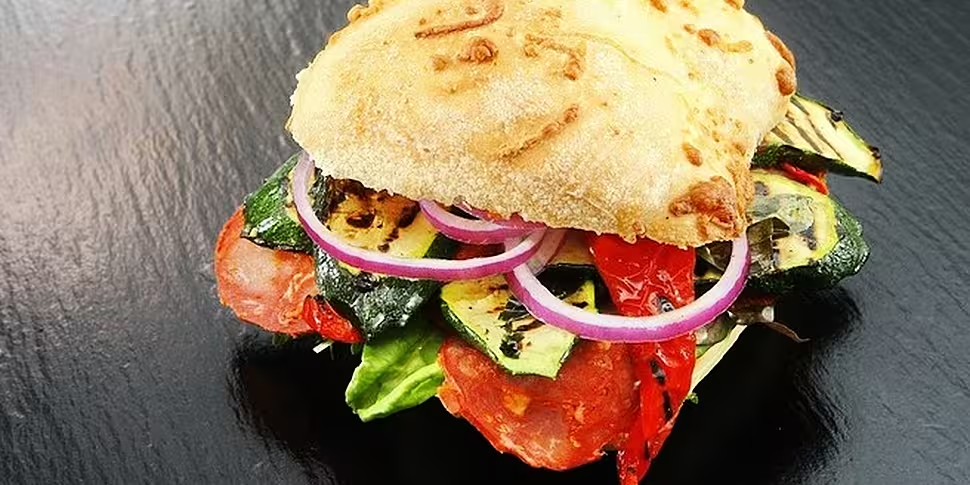Remember, remember the third of November, when bread-shilling marketers across the Atlantic created National Sandwich Day – a 24-hour period during which to celebrate the most versatile meal in the world’s diet.
The humble sandwich is generally attributed to John Mantagu (1718 – 1792), the 4th Earl of Sandwich, who is believed to have loved gambling so much that he chose to eat his meals between slices of bread in order to avoid having to ever get up and abandon the gaming table. His culinary habits became so well known among gambling circles that others, also eager to play their hands rather than feed their bellies, would command “The same as Sandwich!” from servants, catching on to the point of adopting the name altogether.
In the centuries since, varieties and styles of sandwiches have developed so much that it’s impossible to even limit the definition to two slices of bread sandwiching a filling. From the Nordic open-top smørrebrød to the butter-smeared tartine, by way of the Döner kebab and millions of foot-long Subs, sandwiches are part and parcel of the food experience of life. Here are seven facts about sandwiches you may not know...
- The first recorded use of the word sandwich in print dates from 1762
Historian Edward Gibbon, born in Putney in 1737, was the first person to ever write about the sandwich in his journals. “I dined at the Cocoa Tree,” Gibbon says. “That respectable body affords every evening a sight truly English. Twenty or thirty of the first men in the kingdom... supping at little tables, upon a bit of cold meat, or a Sandwich.”
- The all-American PB&J kept America going during the Great Depression
At a time when mass poverty was sweeping the world, the combination of peanut butter and jam on bread proved vital to keeping millions from starving, offering enough calories and nutrition at a relatively low cost. This was down, in no small part, to the food processing developments of mass-produced peanut butter and the invention of pre-sliced bread, which offered the poor and affordable option and helped promote the sandwich style to an American staple.
- The most expensive sandwich commercially sold costs €195 a go
Serendipity 3, a restaurant in Manhattan, hold the Guinness World Record for its ‘Quintessential Grilled Cheese’, which first made headlines when it was invented in October, 2014.
The cheese toastie consists of two pieces of French Pullman champagne bread, made with Dom Perignon champagne and edible gold flakes, smothered with white truffle butter and Caciocavallo Podolico cheese. If that doesn’t sound like a burpy repeating fest, it’s served with South African lobster tomato bisque as a dipping sauce.
- In the past, patients were sometimes fed cotton-wool sandwiches
As late as the 1940s, men and women who had swallowed dangerous and sharp items like pins were forced to eat pieces of cotton wool in order to aid with their safe passage. A Dr J Johnson, having encountered a patient who accidentally swallowed his dentures, writes: “He was treated with sandwiches containing a thin layer of cotton-wool in each, between the slices of bread and butter; and after a week, when a mild laxative was given, the dental structure, now being enrolled in cotton-wool, was passed without difficulty amongst the excrement.”
- The highest price paid for a sandwich at auction was $28,000 on eBay in 2004
The grilled-cheese toastie, prepared in the Miami home of Diane Duyser became an early viral news story after making headlines all over the world. Duyser had been about to bite into the sandwich when she noted that the toasting had brought about an apparition of the Virgin Mary. Having sealed it to prevent it from rotting and keeping it as a lucky charm for a decade, Duyser’s real luck came in when a Canadian online casino forked over $28,000 to claim it at an auction.

- Sandwiches are big business across the world
The significance of the sandwich in the western culinary canon cannot be underestimated, crossing all socio-economic divides as one of the most commonly consumed meals. So important is the sandwich that in the US, the Subway chain has more stores than McDonald’s, while in Britain, the amount of money spent on sandwiches is equal to 38% of all that spent on fast food – almost double what is spent on hamburgers, which are arguably another type of sandwich.
- Cows eat sandwiches, according to a third of British children
Researched commissioned by Cadbury’s in the UK asked children where they thought a number of foods come from, the respondents claiming that the main ingredients in chocolate were eggs (20%), flour (12%), plants (9%) and wheat (6%).
When quizzed on what a cow’s diet consists of, almost two out of every three children asked said that they believed that cows spend their days happily munching on sandwiches or pizzas when out in the fields.









